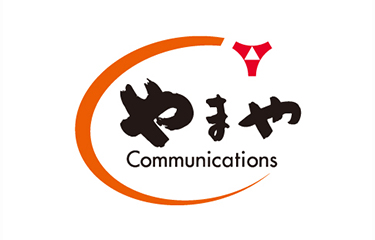Breakthrough AI model developed for Yamaya Communications' new cod roe plant

Japanese spicy cod roe maker Yamaya Communications recently announced that it will be onshoring some cod-roe processing work previously done in Vietnam.
In an interview with the Japanese public television channel NHK, the Fukuoka-based company’s president, Masahide Yamamoto, said that a major reason for returning the work to Japan was costs, as wages have risen in Vietnam, with the weaker Japanese yen compounding the company's financial burden.
"The gap in labor costs between Japan and overseas has narrowed over the past 20 years. Supply-chain disruptions amid the coronavirus pandemic are another factor," he said.
However, the company’s new factory was planned before the current supply-chain problems, and well before the yen weakened. The company's plans were partially driven by the availability of a favorable site and by the desire to cut labor costs by incorporating automation and artificial intelligence (AI) into the production process.
Yamaya Communications, which started making “mentaiko” (spicy cod roe) in 1974, is now Japan’s largest manufacturer of the product, and has branched out into other products like “dashi” soup stock, “shochu” liquor, and “motsu-nabe” (beef offal hotpot) restaurants.
Mentaiko – pollock roe marinated in chili, sake, kelp, and citrus for several hours – will be the primary product manufactured in the new plant in Sasaguri Town in Kasuya District, Fukuoka Prefecture. Originally a Korean dish, mentaiko was introduced to Japan in the 1950s and became a delicacy in Fukuoka, a city on the island of Kyushu.
Today, all of Japan's major mentaiko producers are located in Fukuoka. The product is most popular in West Japan, which includes Fukuoka and Osaka while in eastern Japan, including Tokyo, and especially in the north, where pollock is caught and “tarako,” or salted roe, is more popular.
Sasaguri Town mainly sources its income from tourism, and its mayor – seeking to diversify income and enhance employment – led the push to build the industrial park that will house Yamaya Communications' new facility. The seafood company signed a contract for the building at a cost of JPY 672.6 million (USD 5 million, EUR 4.7 million) on 15 February, 2018, including an advance payment of JPY 134.52 million (USD 1 million, EUR 900,000), Fukuoka Kenmin Shimbun reported.
However, the Covid pandemic almost derailed the company’s plan to move in, as mentaiko sales at souvenir shops in airports and train stations plummeted and restaurant profits were slashed during Japan's long series of lockdowns.
Yamaya Communications lost JPY 1.6 billion (USD 11.8 million, EUR 11 million) in its fiscal year ending in August 2019, but managed a small profit of JPY 116 million (USD 874,000, EUR 820,000) in FY2020. As a result, the company requested that the handover and final payment on the property be postponed. Finally, in April of 2021, the company confirmed its plans to relocate in spring of 2023.
The new factory will make heavy use of automation and AI to reduce labor. A similar trend can be seen throughout Japanese industry, including the seafood sector. SeafoodSource has previously reported on the multiple ways AI is being used in Japan, including AI-based image recognition software that will be used to count fish in aquaculture, to grade tuna quality, and to detect foreign matter in salmon roe.
In April of 2020, the company reported that it had begun trial operations to fully automate its factories by utilizing AI for foreign-matter inspection and grading.
In the production of chili mentaiko, if it is used as a raw material, it is inspected for foreign matter and grade judgment is performed, but it is difficult to secure skilled labor to perform those duties.
"Measures that do not depend on individuals were required,” the company said. “In addition, as the use of AI spreads throughout society, we have decided to actively work on the introduction of AI to further improve productivity.”
The company conducted demonstration experiments of image recognition software that incorporates deep learning and subsequently developed an AI model that achieves accuracy equal to or greater than manual work. The complex judgment criteria that veteran workers unconsciously use eventually were turned into programmable metrics through repeated model learning and evaluation, according to the company.
The project was a collaboration with IBM Japan and Sigzam Corporation, a Fukuoka City-based system development company. It used IBM Japan's AI development platform, the IBM Watson Machine Learning Community Edition, and a dedicated server designed for AI workloads to develop the novel modeling and software.






Share